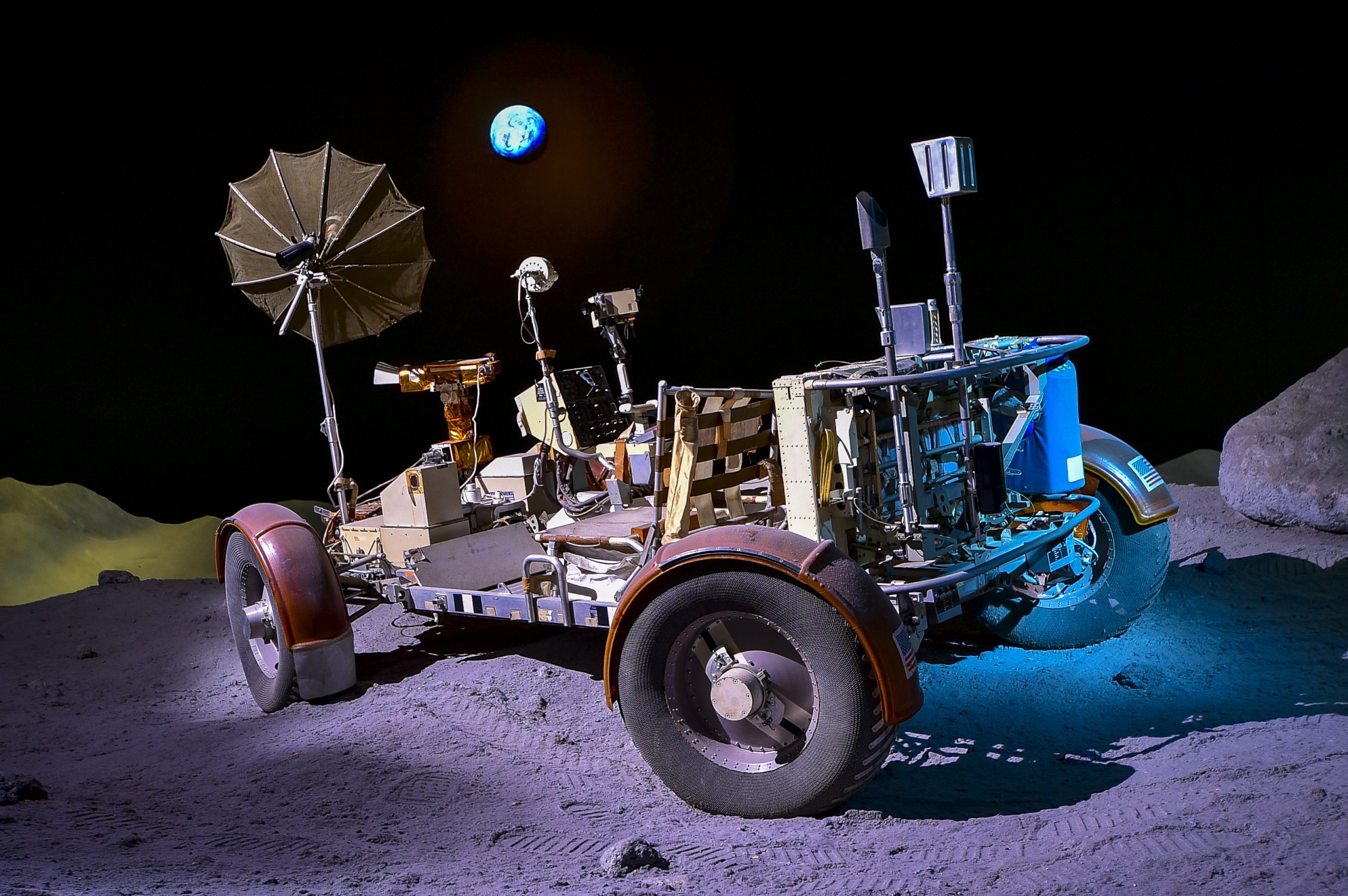[sp name=’LunarRover’]
This fall, we are exploring how space inspires progress. As we prepare for a return to the Moon with Artemis, it is important to look back at how Apollo inspired NASA’s next giant leap. Many of today’s rover designs were inspired by perhaps one of the most iconic vehicles of all time – the Apollo-era lunar rover.
Since it was difficult for astronauts to get around on the lunar surface in their bulky spacesuits, the later Apollo crews used the Lunar Roving Vehicle (LRV) to help them get around.
Used on the last three Apollo missions, the electric-powered lunar rover was designed to help space explorers get around in the low-gravity environment of the lunar surface.
Learn more about the Apollo-era lunar rover with these fun facts:
- NASA’s LRV, with a mass of nearly 463 pounds, was constructed to hold over 1,000 additional pounds of cargo on the Moon.
- Astronauts would strap themselves securely into the rover with Velcro seatbelts (safety first)!
- The vehicle was operated by using a controller located in between the two seats. In fact, as you may recall, there is no steering wheel on the rover!
- Just six men in the world have ever taken a lunar rover for a drive on the Moon.
- The Apollo LRV could travel at speeds of nearly 10 mph, over a range of roughly 55 miles!
- The rover was stored folded inside the Lunar Module for transport to the Moon.
- It took just 17 months to develop the LRV.
As a new era in space exploration is ushered in with NASA’s Artemis missions, the agency will need new technologies and vehicles to aid space explorers on their return trip. NASA’s LRV continues to be a source of inspiration on which the industry can draw, to advance space transportation for the next generation.
During your next visit, don’t forget to stop by the lunar landscape in Starship Gallery to see the LRV trainer!









